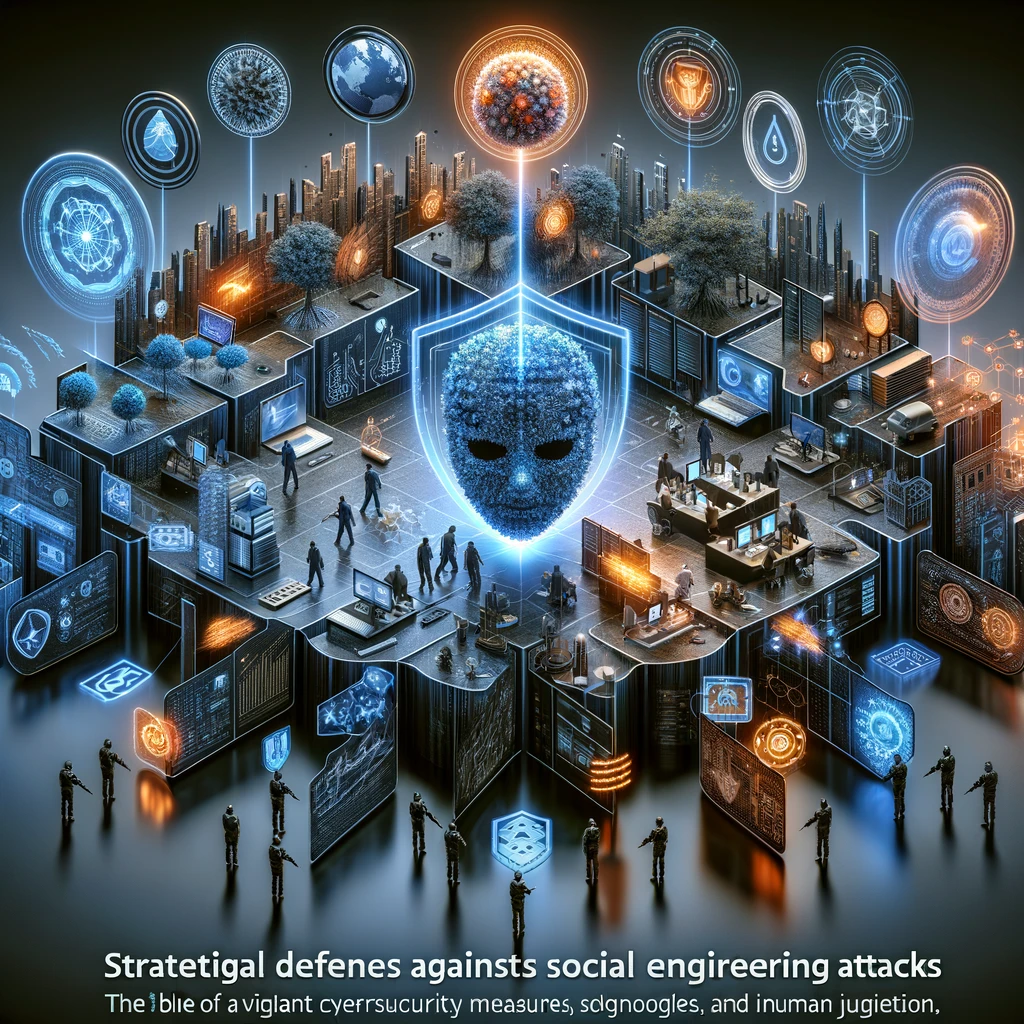Understanding the Threat Landscape
In the complex web of business information technology, social engineering attacks stand out for their cunning exploitation of human vulnerabilities rather than technological flaws. These attacks, which manipulate individuals into breaking security protocols, present a significant challenge to organizations. This exploration delves into the nature of social engineering, its various forms, and the multifaceted strategies required to mitigate its risk.

The Human Factor: A Weak Link in Security
Social engineering exploits the natural tendency of people to trust. Whether through phishing emails, vishing calls, or physical impersonation, attackers deceive individuals into granting access to sensitive information or systems. The effectiveness of social engineering underscores the critical role of awareness and training in cybersecurity strategies.
Research Insights: The Prevalence of Phishing
Phishing, particularly, highlights the effectiveness of social engineering, with a significant percentage of such emails not only being opened but leading to further action by the recipient. This success rate is a stark reminder of the continuous threat posed by seemingly simple tactics and the importance of vigilance among all network users.
Technological Measures and the Role of Training
While technology can play a role in filtering out potential threats, such as spam or malicious websites, it is not infallible. The most potent defense against social engineering lies in comprehensive employee education programs that emphasize critical thinking and caution in the face of unexpected or unsolicited requests for information or action.
Understanding Attack Objectives and Modalities
Social engineering attacks can aim for immediate financial gain, data theft, or even broader objectives such as causing disruption. Recognizing the various types and mediums of these attacks, including electronic, non-electronic, and intelligence gathering, is key to developing effective countermeasures.
Implementing Effective Defenses

- Educational Programs: Engaging training that simulates real-world scenarios can heighten employee awareness and preparedness against social engineering tactics.
- Restricting Access: Limiting user access to only what is necessary for their role can significantly reduce the potential damage from compromised credentials.
- Physical Security Measures: Ensuring that sensitive areas and equipment are secured against unauthorized access is as crucial as cybersecurity measures.
- Technological Solutions: Utilizing antivirus software, firewalls, and email filtering can provide an essential layer of defense against electronic forms of social engineering.
- Regular Updates and Vigilance: Keeping systems and software updated, along with continuous monitoring for suspicious activity, are fundamental practices in maintaining security.
The Importance of a Comprehensive Approach
The complexity of social engineering attacks necessitates a holistic approach to cybersecurity. Combining rigorous employee training, strict access controls, advanced technological defenses, and an understanding of the broader social engineering landscape can fortify an organization’s defenses against these insidious threats.
Conclusion: Building a Culture of Security
Addressing the challenge of social engineering attacks requires more than just technological solutions; it demands a culture of security awareness and constant vigilance among all members of an organization. By embracing a comprehensive strategy that includes education, technology, and policy enforcement, businesses can significantly mitigate the risk of social engineering and protect their vital assets.
Works Cited
This analysis draws on diverse sources, including studies on phishing effectiveness, insights from the FBI on spear-phishing, and recommendations from the Department of Homeland Security, offering a multi-dimensional view of social engineering threats and the best practices for defense.






